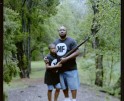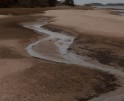Month of Photography Denver: Interview with Founder Mark Sink

The Denver Post, February 19, 2023
Every two years, Denver hosts the Month of Photography–a biennial festival in which galleries, museums, libraries, coffee shops, and countless other spaces along the front range come together to celebrate the medium through exhibitions, lectures, events, and workshops. The festival also hosts portfolio reviews, where artists can share their work with curators, publishers, and other art professionals from around the world. Since its founding in 2004, Month of Photography has grown to include over 180 venues across the region.
Month of Photography’s founder is Mark Sink, a truly prolific artist and organizer who also played a key role in establishing the Museum of Contemporary Art Denver (MCA), the Denver Collage Club, and the international street art exchange The Big Picture, among others. He has also been a member of the board of several local arts non-profit groups, including the Colorado Photographic Arts Center, which took stewardship over Month of Photography in 2019.
Like many people in the Denver photography community, I have felt a deeply personal connection with Month of Photography (affectionately called “MoP” for short) since I was first introduced to the group in 2016. I had just finished graduate school and was quickly realizing that I’d failed to develop any connections outside of the program while I was there. I was in desperate need of a community–and a job. One of my professors mentioned an upcoming Month of Photography meeting at Mark Sink’s house; he gave me an email address and told me I might be able to find what I was looking for there.
When I arrived in Mark’s backyard, a big group of people were gathered in a loose circle- perched on stumps, sitting in lawn chairs or on blankets on the ground. Each person in turn would introduce themselves and give an update on how they (or the organization they represent) wanted to participate in Month of Photography. I can’t remember exactly what he said when it was my turn, but Mark treated me like a new friend he’d brought to a party. “This is Kellye–she’s a recent grad looking for a job and wanting to help out. Let’s make room for her.” And they did.
In an art world that can seem really intimidating for someone at that (or any) stage in their career, I was incredibly humbled and moved by the way the photo community embraced me. I knew there was something really special about it and that I was very lucky to be a part of it. In the four Month of Photography festivals that have happened since then, I have volunteered, curated shows, and exhibited my own work. It’s provided a lot of great networking opportunities (I got two jobs after that first meeting), but participating in Month of Photography also makes me feel connected to my community–one that has come to feel like family, even after moving thousands of miles away.
I’m telling this story because I think everyone deserves to be in a community as warm and supportive as this one has been for me. Communities like this don’t happen on their own; it takes hard work and dedication to build them. Month of Photography began with one person’s dream and has grown into a powerful platform that has amplified the voices of hundreds of artists across the globe. In a world in which the arts are chronically undervalued, the festival is a testament to what’s possible when we work together.
It’s MoP season in Colorado again, and Mark has been busy curating an expansive retrospective of the festival’s history at the RedLine Contemporary Art Center and a show for the Denver Collage Club at Alto Gallery. In between discussing logistics and what’s new our lives, I asked him to share the story of MoP–how and why he started it, what he sees for the future, and some of the more practical aspects of organizing community initiatives.
Over the course of the week, our editors will highlight a few of the many exceptional exhibitions from this year’s festival, but I would like to begin first with my conversation with Mark. I hope it can inspire all of us to imagine what else we can build together.
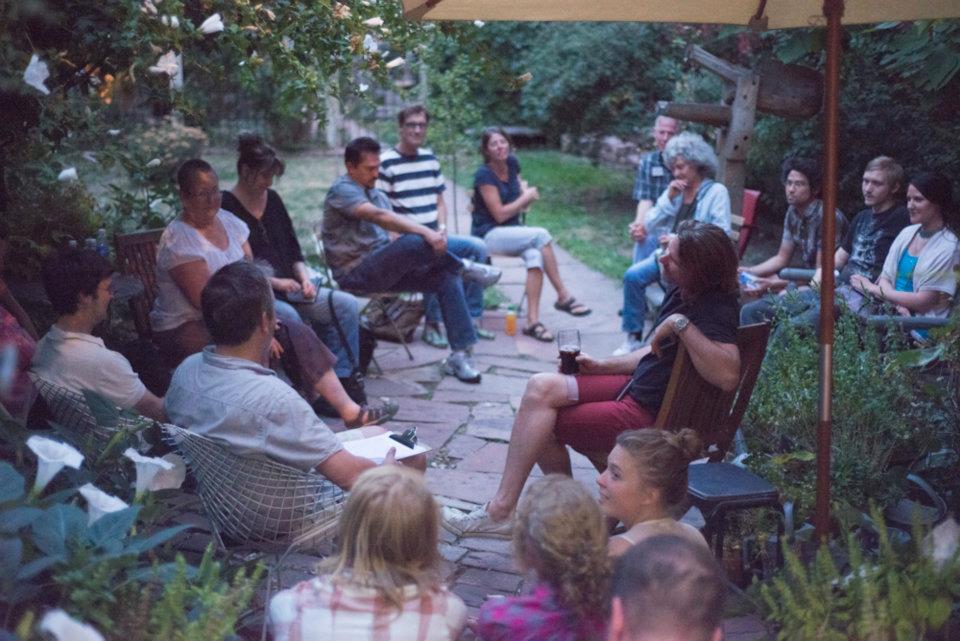
First Month of Photography Meeting, 2003
Kellye Eisworth: What was the impetus for MoP? How did you come up with the idea, and why did you feel like it was worth pursuing?
Mark Sink: It’s always been a simple desire to gather community. Many of my life’s most interesting projects are built around gathering and presenting a community. It’s a curating of sorts, it comes naturally; I do it without necessarily realizing I’m doing it. I’ve always been driven to fly the flag of Colorado’s Artistic Talent high, so to speak.
I started organizing salons in the 90s–first the Denver Salon in my living room, and later online. The Denver Salon group led to museum exhibitions, and many in that early internet crew have gone onto great fame. Many of the artists in those early groups are still close friends.
Then, a group of us started the first community garden that eventually became the now giant Denver Urban Gardens that spread across the city. In that garden I met the local art activist Marina Graves and she asked, “Don’t you think we need a contemporary art museum?” So we had our first Museum of Contemporary Art (MCA Denver) board meeting in my backyard.
Back to Month of Photography…
I was initially inspired by the Houston FotoFest meeting place. Every two years, Houston goes nuts for photography–portfolio reviews with curators from all over the world, lectures and panels and exhibitions all over the city… I started going as a photographer in the mid-1990s; I would come home so lit up and excited, with countless new connections.
Doing that here in Denver was a big dream. A lot of people in the art world- gallery owners, university department heads -told me not to try, that I would be in way over my head. But many others in the community encouraged me, including FotoFest directors Fred Baldwin and Wendi Watriss, with whom I’d become very close. So I kept going.
I’ve always felt that it’s important to empower people, and something inclusive like a festival is a great way to do that. It creates a very fertile creative environment that benefits everyone–artists, galleries, students, coffee shops–and its reach is far.
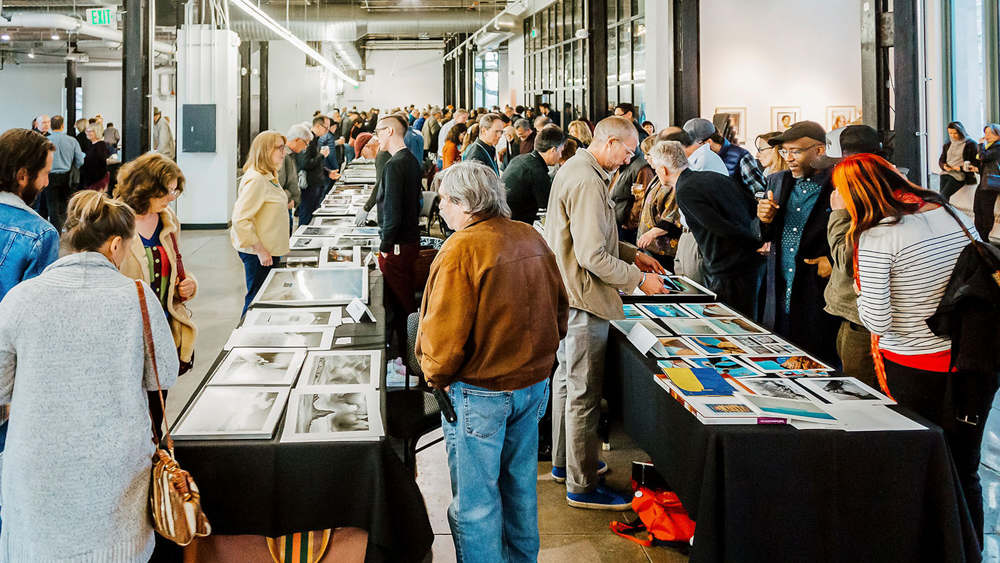
Month of Photography Portfolio Walkthrough, 2019
The first Month of Photography was actually planned around the SPE (Society of Photographic Education) conferences, which host a lot of lectures and events, as well as portfolio reviews. I thought getting galleries to focus on photography at the same time would be a great opportunity to build on that energy and amplify its impact.
Unfortunately, I quickly learned SPE was very insular; it was against their bylaws to even acknowledge MoP. That rejection inspired me to expand Month of Photography in 2004 into a multifaceted event that hosts its own lectures and student programming and portfolio reviews, as well as the gallery exhibitions. It received a groundswell of support (people love a party!) and has continued growing to include over one hundred and eighty art spaces across the state.

Installation of THREE ACTS A Survey of Shame, Emotion, and Oblivion at RedLine Contemporary Art Center, 2021
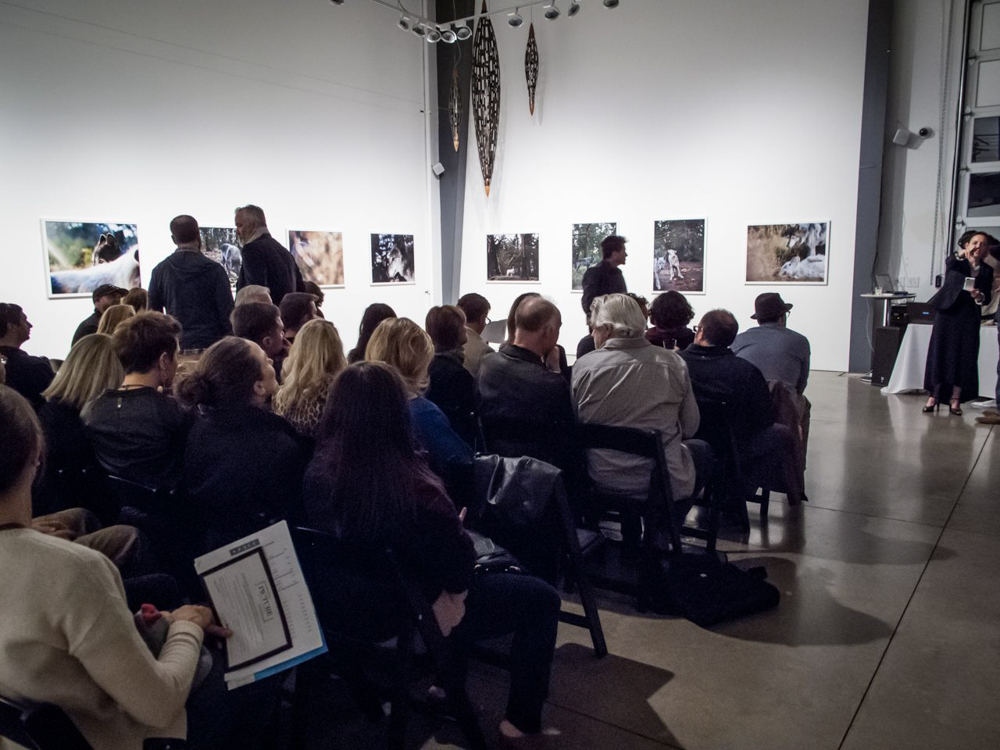
Artist Talk at Space Gallery, 2015
KE: How did you get it started, how did you approach galleries and organizations to participate?
MS: I’d ask any art space (and coffee shop) I walked into–“Have you ever heard of MoP?” I also researched any photography-related event happening by chance and added them to the list. When I first started, I would make a webpage for galleries’ photo shows before they even responded to my invitation to join…They were often quite surprised, and most always very happy.
I would do all of this in what I called my bed-office, often at 3 am. My workflow was simple but effective: I pulled info from their website into a basic txt file, and then I would just copy/paste it into the website, Google map, calendar, the blurb catalog, blog, social media. So I could start from scratch with, say, a museum show in Boulder, and have them totally plugged in within 10 minutes–all before they even knew I was doing it.
It was very renegade–just do it and ask later. That’s how we got MCA Denver going too.
I did the same for kids and struggling galleries and coffee shops…store fronts, government buildings, libraries…we even got the state capital aboard!
KE: Why do you think so many organizations choose to participate in and support MoP?
MS: Oh, that’s an easy one–they get a lot of a bang for their buck…and we’ve never charged anything. [laughs] My big spiel has always been that everyone needs to work together. Being part of the festival means extra media and press, which has led to increased traffic and sales. There is power in numbers if you can get a group to pool their resources to work towards the same goal. And of course it builds community…there’s that word again.
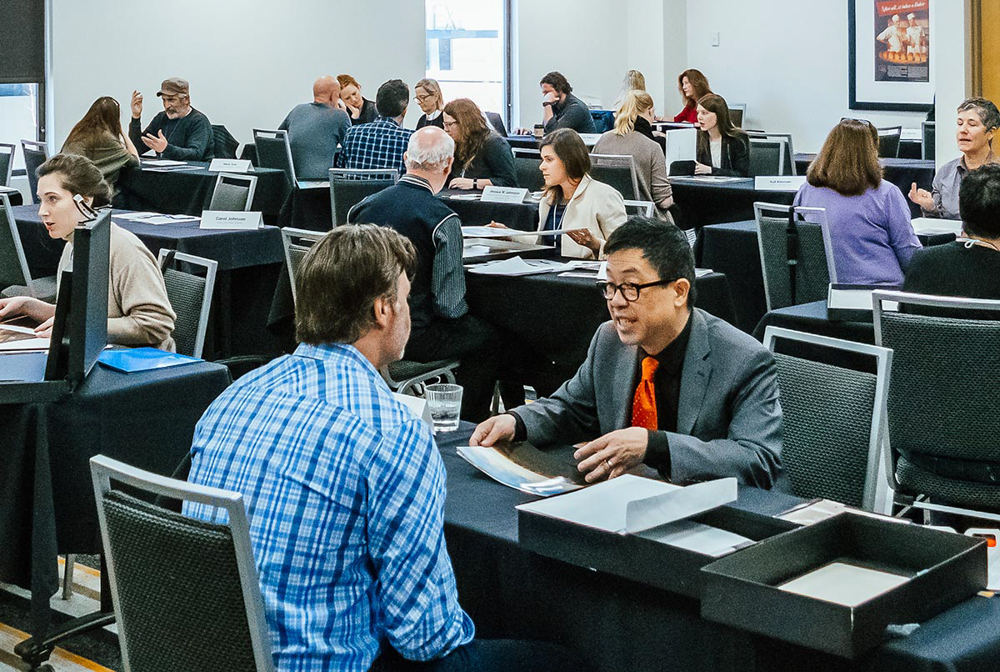
Month of Photography Portfolio Reviews, 2019
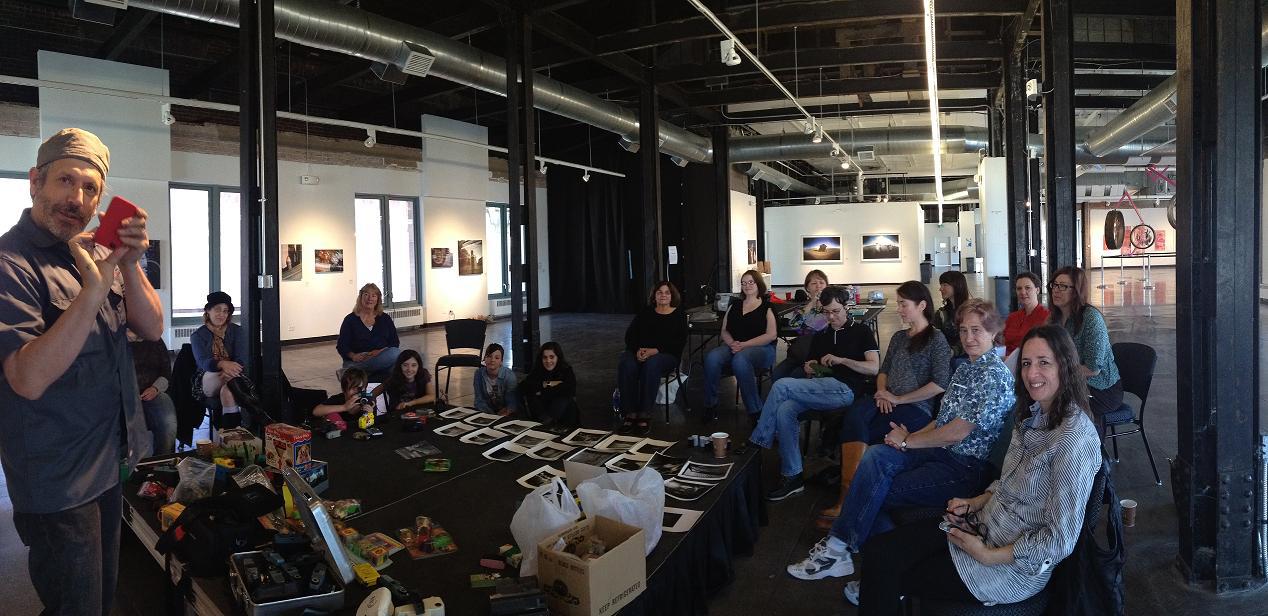
Toy Camera Workshop at the McNichols Civic Center, 2013
KE: What led you to the decision to give CPAC the reins, and how do you think it’s going to change the festival?
MS: Ultimately, a non-profit organization can access so many more resources–grants, corporate asks, etc.–than I could as an individual, all of which will help Month of Photography grow and provide even more opportunities for artists. CPAC is a really important part of the Denver photo community, and has always had a special place in my heart. They’ve overseen the MoP portfolio reviews since 2015, so it was a natural transition. Executive Director Samantha Johnston and her team have turned the reviews into a world class event, so I have every confidence in their ability to take the reins.
Of course, it’s hard to make something more polished without losing some of the rough edges that made it special in the first place. The Mark Sink model isn’t institutional–it’s messy and all-inclusive. Everyone is welcome to participate–coffee shops, libraries, community centers–and it’s not just venues that want to have shows. It’s the artists, educators, and other individuals in the community.
Month of Photography would never have been possible without all of the volunteers who were willing to pitch in. And I think they were willing to do that because they saw the value in what we were building together. I think what’s really special about Month of Photography–it’s always been ‘for the community and by the community’.
A lot of times, it can be harder for people to feel that deep personal connection when you make things more organized and structured, and rely less on the contribution of individuals, but I’d like to think that won’t happen to MoP. The folks at CPAC have always been right there with the rest of us at those meetings in my backyard, and they really understand and value the collaborative, community spirit of MoP. They have continued the tradition of having open MoP planning meetings where anyone can join and participate, and I think they’re committed to keeping that spirit alive.
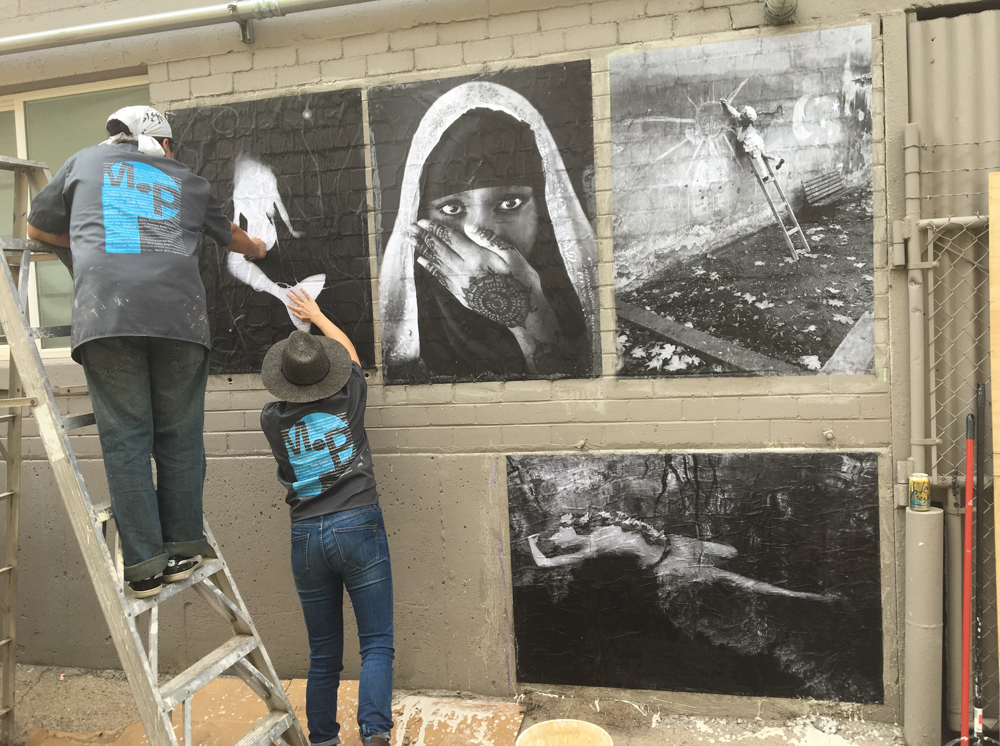
Big Picture Volunteers
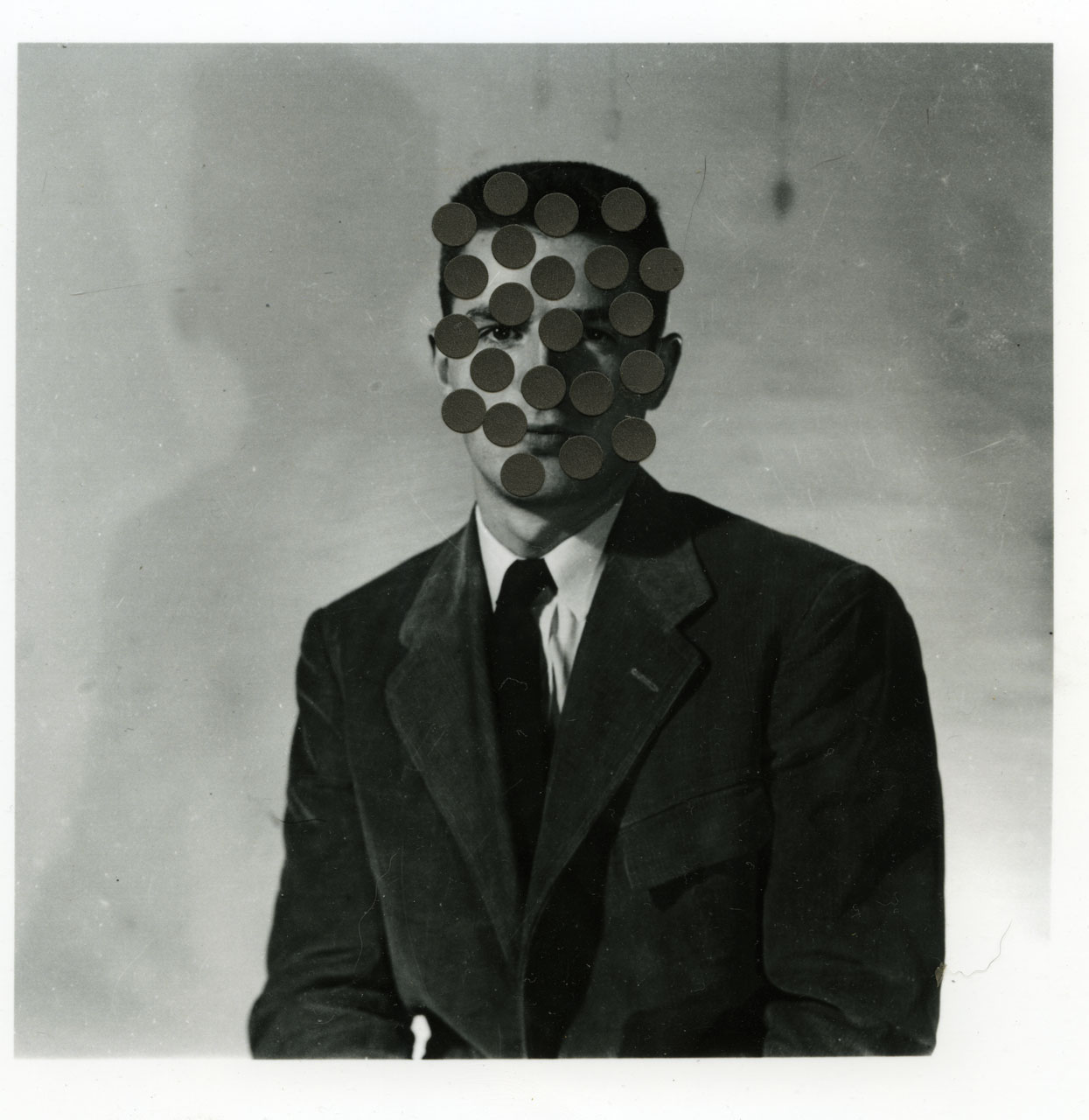
©Mark Sink, Dot Series
KE: Now that you’ve taken a step back, what are you planning to do with that extra time?
MS: [laughs] Extra time…right now, my main focus is curating a MoP retrospective at RedLine. I also have many other ongoing projects- The Big Picture has great potential for world domination [laughs], and our Denver Collage Club. The Festival of Light has great potential also.
And oh, yeah–I’m a photographer. I want to spend my time dancing in the darkroom after making a breath-taking image in the late afternoon liquid light.
Foremost though, I am greatly enjoying being a dad. It’s been the most exciting project yet. She is teaching me.
KE: What role do you envision for yourself in MoP going forward?
MS: Whatever support they will let me give. I think I might bring back the monthly idea and planning meetings in my backyard as an independent support group for CPAC for the next festival. I miss those terribly. So many great connections are made there. It’s great on many levels. Plus, I just get to see my friends.

Installation of THREE ACTS A Survey of Shame, Emotion, and Oblivion at RedLine Contemporary Art Center, 2021
KE: What do you think the impact of Month of Photography has been?
MS: Oh, I’m very proud of the festival’s impact and all the opportunities it has created for so many artists. One statistic I am particularly proud of is that we generally show more women than men!
KE: Do you have any advice for others who are interested in starting initiatives in their own communities?
MS: Like I said, I believe greatly in salons, meetings, clubs–be it in your living room or on the internet. Any great art movement has always started with a community. We are more powerful together than we are alone, and as a group you have so much more momentum. As they say, “Don’t wait for it to happen, make it happen.”
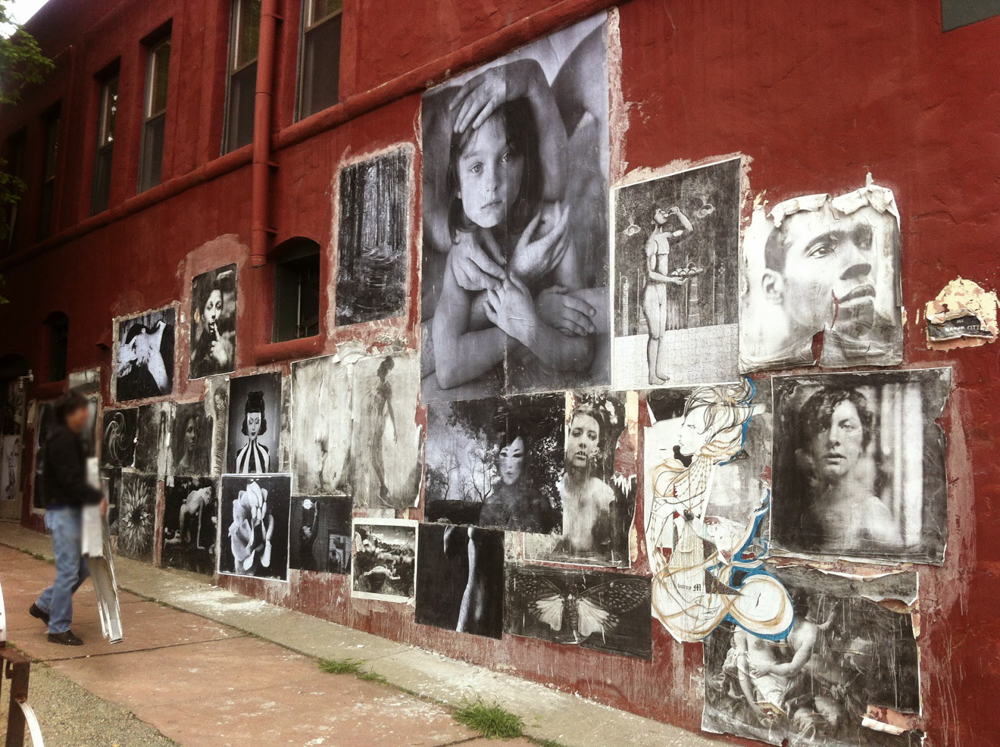
The Big Picture Installation
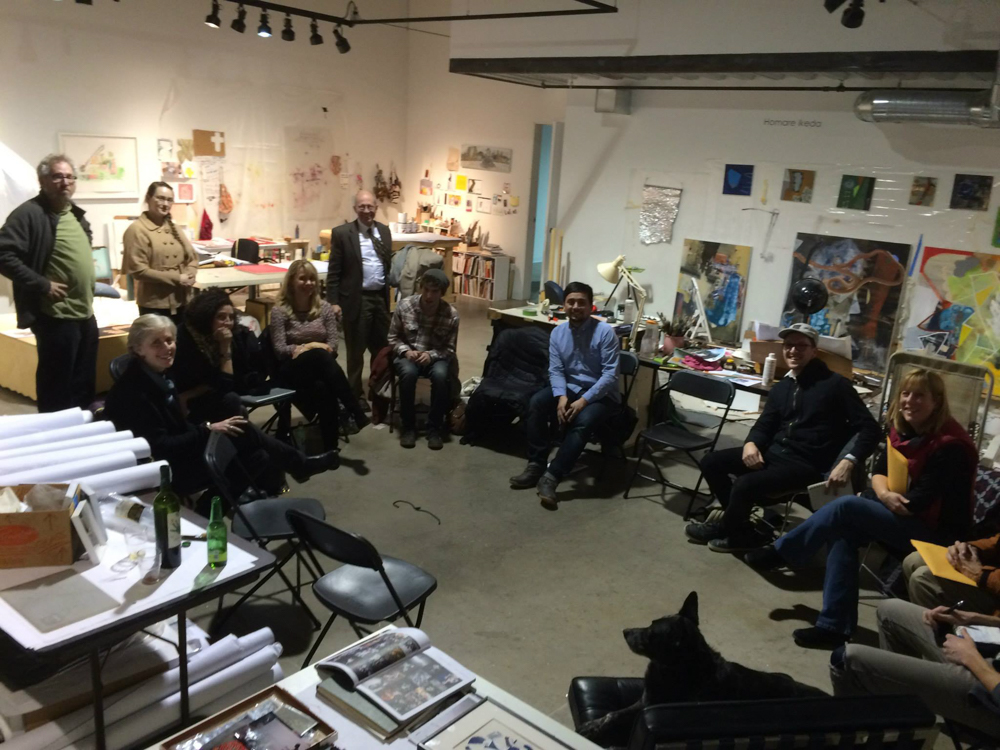
Denver Collage Club Meeting, 2015
KE: What kinds of organizations or initiatives do you think we need more of?
MS: A couple of BIG ones. My first retirement mission after MoP is to rally the community and government to create a historical art storage space and resource center for Denver art organizations and artists. It would be a clean, dry, temperature-controlled warehouse island–a holding ground for future historians and researchers. There’s an incalculable amount of amazing Colorado art history that needs a home; I’m not proposing something on the level of a museum, just a purgatory of sorts to save material from going into dumpsters. People don’t realize that there’s a massive amount of work that needs a place to go…families and organizations have no other recourse than to throw the work away. It’s happening before my eyes.
I’ve always had a soft spot for the elderly; In the 1970s, I contributed to the Firefox book series documenting the lost stories, recipes, and medicines of past generations. [laughs] A soft spot…while I’m standing there myself, elderly. We need to do more of this kind of preservation for art. I see a great need for a giant artist retirement community. It really could be an amazing resource where younger people could learn from elders… lots of exhibition space for retrospectives music–group kitchens and community gardens–maybe add that big ol art storage warehouse…Young people could help with all and visa versa. It would create jobs and money, but more over the community benefits on so many levels. Life knowledge is something that should be shared with the community, not hidden away. My dream is to start a business model around this and make it happen before anyone realizes it was not possible.
Follow on Instagram
Month of Photography: @mopdenver
Mark Sink: @marksink
The Colorado Photographic Arts Center: @cpacphoto
The Big Picture: @the_big_picture_colo
The Denver Collage Club: @denvercollage
Posts on Lenscratch may not be reproduced without the permission of the Lenscratch staff and the photographer.
Recommended
-
One Year Later: Christian K. LeeJuly 20th, 2024
-
One Year Later: Nykelle DeVivoJuly 19th, 2024
-
THE CENTER AWARDS: FISCAL SPONSORSHIP: CAROLINE GUTMANMay 28th, 2024
-
Earth Week: Hugh Kretschmer: Plastic “Waves”April 24th, 2024
-
Earth Week: Richard Lloyd Lewis: Abiogenesis, My Home, Our HomeApril 23rd, 2024

